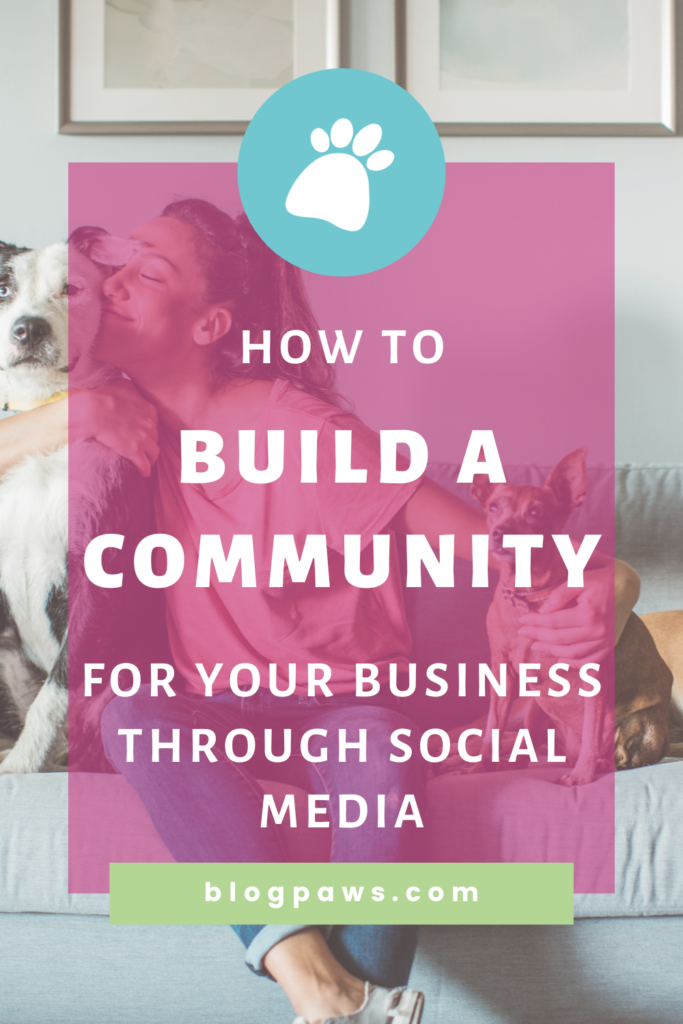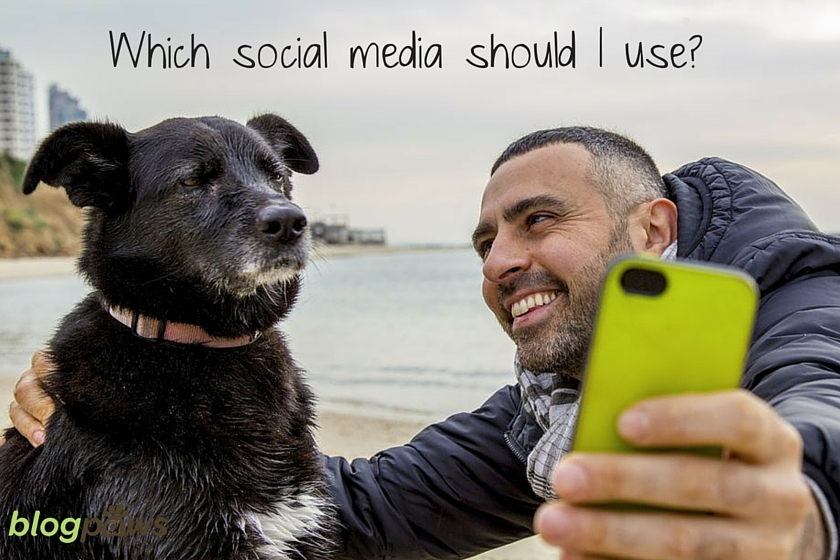How to Build a Community for Your Business through Social Media
There is nothing quite like finding a community of like-minded people who all share a common interest, passion, or goal. People like to feel welcomed, feel like they belong, and to be able to talk about their interests and passions with people who understand. Because a community brings engagement and camaraderie, which can then be leveraged to grow a business, you might be wondering how to build a community around your business.
If so, you’ve come to the right place! Keep reading to learn more about the benefits of building a community, as well as ideas on how to build that community.
What is a Social Media Community?
In general, a community is a group of people who share a common interest, passion or goal. A community creates and promotes a sense of fellowship and belonging. When created online, members from all over the world are able to come together to engage with each other, participate in group discussions, ask questions, get advice, share about themselves and their experiences, and rally around a common cause or goal.
A community in business means just the same thing. It could mean bringing together people with the same passion your business was created to encourage. For example, if you have a blog centered around outdoor adventure with cats, you could create a community of people who also love adventuring with their cats or want to learn more about it.
It could mean bringing together people who all experience the same problem that you’re able to solve. For example, if you’re a dog trainer, you could create an online community of dog owners who are all looking for advice or who are looking for a safe space to share about the joys and struggles of training their dogs.
Here at BlogPaws, we’ve built a community of small pet business owners who have come together in our BlogPaws Community Facebook Group looking for education, advice, networking opportunities, and just general camaraderie.
An online social media community can exist in dedicated spaces like Facebook groups and on platforms like Circle or Mighty Networks, but they can also be created on Instagram, Twitter, and TikTok. If you have a group of people engaging with your content and each other, you’ve got yourself a community.
The Benefits of Community in Business
Perhaps you understand how to build a community, but you’re wondering why you should go forward with it or if it’s the right move for your business. Those are fair questions, so let’s take a look at the many benefits that come with building an online community.
- Increased engagement – If you’ve fostered a sense of community around your brand or business, your audience will be more likely to continue coming back and engaging with your social media content and even your blog or website.
- Audience growth – Increased engagement usually means audience growth!
- Brand awareness and loyalty – As your community grows, so too does your brand awareness. If you have actively engaged community members, they will be more likely to remember who you are and what your business is. They will hopefully even share about it with others.
- Increased sales – A growing audience and higher brand awareness will eventually translate into more sales. Let’s go back to the dog trainer example mentioned above. If a dog trainer has built a community of dog owners who are interested in training their dog, those members are more likely to remember that trainer and hire them when they come across a training obstacle that requires more hands-on help.
- Goal achievement – As you set goals for your business, a community can help you achieve them. Perhaps you have a goal of reaching a certain number of Instagram followers or increasing your website traffic to a certain number. As your community grows, so will your social media followers. As your social media followers grow, so can your website traffic, as you share your content with them.
- Inspire others – As a pet business owner, your business was likely born out of a passion. As you share that passion with others and grow your community, you will inevitably reach more eyes and ears and inspire others to share in that passion as well.
How to Build a Community for Your Small Pet Business
Now that you know the whats and whys of building a community, it’s time to drill down and talk about how to build an online community. Below are 11 actionable steps you can take to build a community around your business, whether it’s on a social media platform like Instagram or TikTok or in a dedicated space like a Facebook group.
Niche Down
Niching down is an important business step for many reasons, one of which is that it will help to grow a community. Communities tend to grow around a specific topic, passion, or area of interest. If your business is too broad and tries to cover too many topics, building a community will be more challenging because you don’t have one thing for your audience to rally around.
Identify Your Audience
This step goes hand in hand with niching down. Part of niching down is identifying your target audience – who you’re serving. For example, if you’re a dog trainer, is your audience other dog trainers or is it dog owners? Those are two very different audiences, each of which could become its own community. Once you figure out who your audience is, you can then begin to build that community.
Post Content That Invites Comments
To build a community, you have to encourage conversation amongst yourself and your followers. On social media, the best way to encourage conversation is to post content that invites people to comment. Try asking questions, sharing about interesting or even controversial topics, and just generally posting content that will make people want to comment (this could be in the form of beautiful images, graphics, videos, etc.).
Include CTAs
Calls-to-action (CTAs) are a vital piece of a solid social media strategy. People like to be told what to do and are more likely to do something if you tell them to do it. To further encourage conversation on your social media content, be explicit and tell your followers to comment. You can also ask them to share specific posts, helping to increase your reach and hopefully growing your community even more.
Share Relatable Content
Everyone likes to be understood, to feel like they can relate to you and you to them. Sharing relatable content will help foster those feelings of camaraderie and fellowship that are so important for building a community. Examples of relatable content include quotes, memes or even a personal story of a struggle you’re having that relates to your business.
Actively Engage with Your Followers
You can encourage comments and engagement from your followers all day long, but if you aren’t engaging back with them, they will eventually stop commenting, and you’ll lose your community. Nobody likes a one-sided conversation. Be sure to reply to comments, answer questions, and even spend some time engaging on your followers’ content.
Share Customer/Community Members’ Posts
Another great way to encourage community growth is to share your customer or community members’ content. If a customer posts about how much they love your product or service, share it. If a community member posts about a win they celebrated, share it. Celebrate with them! Your customers and community members will be more likely to talk more about you and your business if you engage with and share when they do.
Wag Worthy Naturals is an excellent example of a brand who has employed this strategy. They have shared their customers’ posts praising their products to their Instagram Stories and even created an Instagram Highlight, so those posts are saved for everyone to see.
Use Hashtags
If your community is on Instagram, creating a specific hashtag for your followers to use will further foster that sense of community. A branded or community hashtag makes it easy for you and your followers to find and engage with each other. Then as more people begin to use that hashtag, you’ll find new people to engage with, further growing your community and brand awareness.
Ask for Feedback
Not only does asking for feedback help you to know what your followers like and don’t like, but it also makes them feel heard and like they’re a bigger part of what you do. You can ask for feedback through a simple social media post, ask your followers to complete a poll, or ask them to vote on something. For example, if you make bow ties for dogs, you could have your followers vote on the newest color addition.
Host Events
One of the best ways to grow a community is to host actual events. Sure, you can host in-person events (that certainly helps to build a community), but you can also host online events! An event gives your community members a chance to see each other “face to face” and engage in real-time. Examples of some community-building online events include Zoom chats or an online summit or conference.
Devise a Community Management System
As you grow your community, you’ll need to make sure you have a social media community management system in place. Your system doesn’t have to be complicated. It could be as simple as creating a social media content calendar to ensure you have a steady stream of content for your followers to engage with. It could be making a schedule for yourself for when you’re going to be online to engage with your community. As your community grows, you may even need to start implementing tools, such as a social listening tool to track brand mentions and engagement.
Though there is definitely a lot that goes into how to build a community, the benefits make it well worth the effort. A strong and well-built community can help grow your business exponentially! The sky is the limit!
Have you grown an online community? What is your best piece of advice for someone who is just getting one started? Tell us in the comments!
About the Author: Emily is the Director of Marketing and Community here at BlogPaws. She is also an online content creator and writer for her own site, KittyCatGO, as well as for Cat School. Emily is “mom” to 7 cats, 1 dog, and 2 sugar gliders. When she isn’t writing, playing music, or crocheting, Emily and her husband enjoy hiking, road-tripping, camping, and canoeing together with their 3 cat adventurers.





